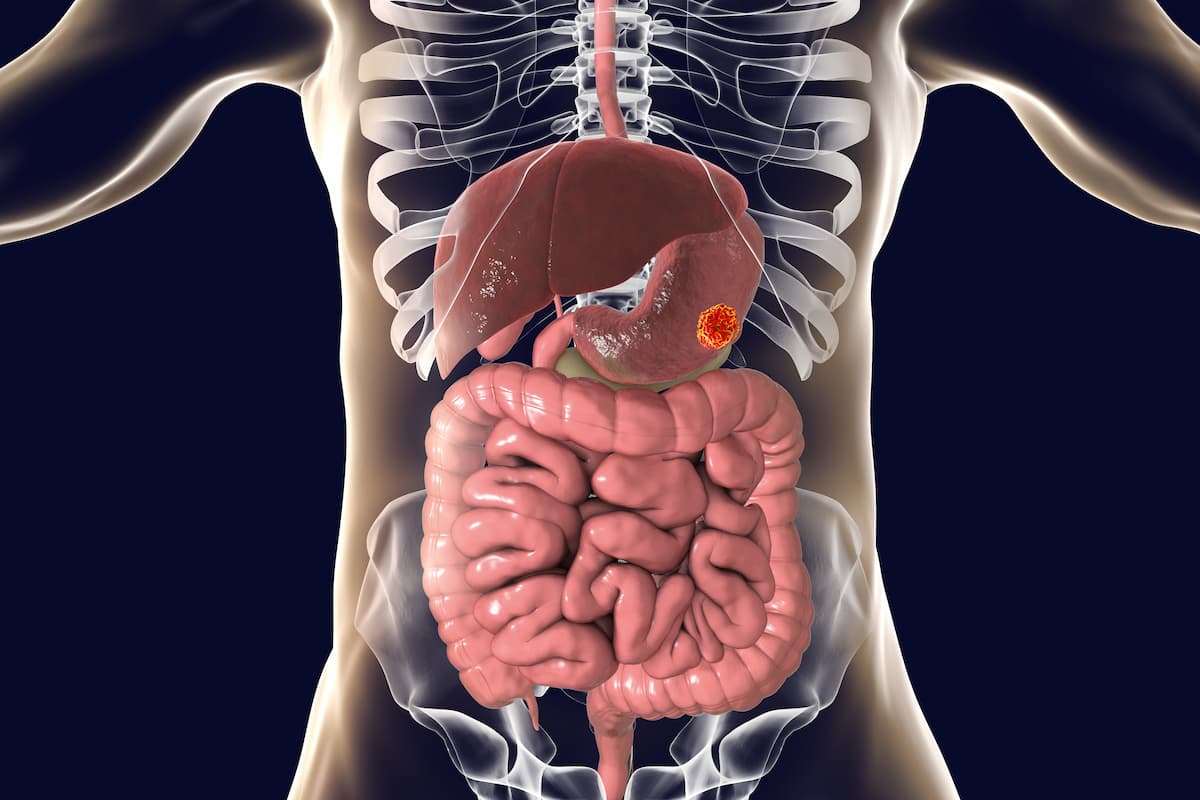ITM-11 Demonstrates Superior PFS Vs Everolimus in SSTR+ GEP-NETs
In the phase 3 COMPETE trial, ITM-11 met its primary end point of PFS and showed a favorable trend with respect to OS in GEP-NETs.
In the phase 3 COMPETE trial, 177Lu-edotreotide met its primary end point of PFS and showed a favorable trend with respect to OS in GEP-NETs.

177Lu-edotreotide (ITM-11), a synthetic, targeted radiotherapeutic agent, elicited clinically meaningful and statistically significant prolonged progression-free survival (PFS) when compared with everolimus (Afinitor) in patients with grade 1/2 somatostatin receptor (SSTR)–positive gastroenteropancreatic neuroendocrine tumors (GEP-NETs), according to top line results from the phase 3 COMPETE trial (NCT03049189) reported in a press release from the developer.1
The median PFS with ITM-11 was 23.9 months compared with 14.1 months with standard of care everolimus (HR, 0.67; 95% CI, 0.48-0.95; stratified P = .022). Additionally, the interim median overall survival was 63.4 months vs 58.7 months, respectively (HR, 0.78; 95% CI, 0.5-1.1; P = .206), which was not conclusive in favor of ITM-11.
Results were presented at the 22nd Annual European Neuroendocrine Tumor Society 2025 Conference from March 5 to March 7, 2025.
Previously, ITM-11 received fast track designation from the FDA for the treatment of patients with GEP-NETs.2
“COMPETE is the first pivotal trial comparing a radiopharmaceutical drug candidate to a targeted molecular therapy without the routine use of accompanying somatostatin analogues in this GEP-NET patient population. These data show unequivocal support for 177Lu-edotreotide’s potential benefit in extending PFS,” Jaume Capdevila, MD, PhD, senior medical oncologist at Vall d'Hebron University Hospital in Barcelona, Spain, said in the press release.1 “Additionally, [ITM-11’s] convenient dosing schedule and favorable safety results reinforce its potential as a compelling new treatment option.”
COMPETE was a controlled, open-label, randomized trial that enrolled and randomly assigned patients in a 2:1 ratio, with a total of 309 receiving either 7.5 GBq of ITM-11 plus a nephroprotective amino acid solution every 3 months for up to 4 cycles (n = 207) or 10 mg of everolimus daily for up to 30 months (n = 102).
Eligible patients had a histologically confirmed diagnosis of well-differentiated neuroendocrine tumor of non-functional gastroenteric origin or pancreatic origin, SSTR-positive disease, measurable disease per RECIST v1.1, and progressive disease as evidenced by 2 morphological imaging examinations made with the same imaging method.3
Exclusion criteria include known hypersensitivity to edotreotide or everolimus; known hypersensitivity to DOTA, luteium-177, or any excipient of edotreotide or everolimus; prior exposure to any peptide receptor radionuclide therapy; therapy with an investigational compound and/or medical device within 30 days of randomization; indication for surgical lesion removal with curative potential; serious non-malignant disease; and planned alternative therapy.
The trial’s primary end point was PFS, and the secondary end point was OS.
Regarding safety, treatment-emergent adverse events (TEAEs) related to treatment medication occurred in 82.5% of the ITM-11 group compared with 97.0% of the everolimus group, and there was 1 grade 2 serious TEAE in the ITM-11 group of myelodysplastic syndrome.
Additional results such as objective response rate, quality of life assessments and dosimetry, and subgroup analyses are planned to be presented at future medical conferences.
The developer intends to submit a new drug application for ITM-11 in the aforementioned indication in 2025.
Johnathan Strosberg, MD, former president of the North American Neuroendocrine Tumor Society and chair of the Gastrointestinal Research Program at Moffitt Cancer Center and Research Institute in Tampa, FL, stated, “The COMPETE results represent a major step forward in the development of new treatment options for people living with progressive, inoperable GEP-NETs. By extending PFS by almost 10 months compared to standard of care in this trial, [ITM-11] showed the potential to significantly improve the treatment paradigm for physicians and their patients.”1
Reference
- ITM presents positive topline phase 3 COMPETE trial data with n.c.a. 177Lu-edotreotide (ITM-11), a targeted radiopharmaceutical therapy, in patients with grade 1 or 2 gastroenteropancreatic neuroendocrine tumors at the ENETS 2025 conference. News release. ITM Isotope Technologies. March 6, 2025. Accessed March 6, 2025. https://tinyurl.com/yc52su8j
- ITM receives FDA fast track designation for radionuclide therapy candidate ITM-11 (n.c.a. 177Lu-edotreotide) in neuroendocrine tumors (GEP-NETs). News release. ITM Isotope Technologies Munich. October 27, 2022. Accessed March 6, 2025. http://bit.ly/3gP3O8r
- Efficacy and safety of 177Lu-edotreotide PRRT in GEP-NET patients (COMPETE). ClinicalTrials.gov. Updated November 30, 2023. Accessed March 6, 2025. https://tinyurl.com/2ujy7ddz
Newsletter
Stay up to date on recent advances in the multidisciplinary approach to cancer.